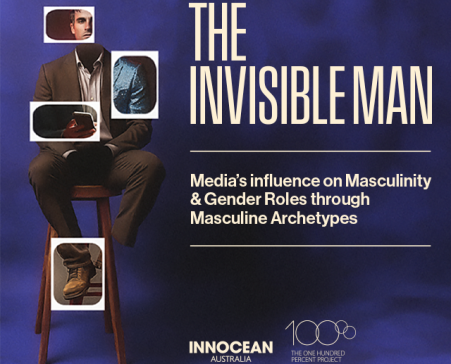Diversity of Thought Blog
Queen Elizabeth II: rebel and a role model at 90
Her Majesty Queen Elizabeth II celebrates her 90th birthday on the 21st of April. She is the longest serving British monarch in history and has overseen dramatic changes to society with steadfastness and dignity. While some may wish for Australia to become a republic and others might bemoan the fact that the Queen inherited her wealth and position, it can only be appropriate to pay tribute to such a strong woman on her 90th birthday. Here we look back at memories and events from her public life.
The coronation of Queen Elizabeth II occurred in 1953 after the death of her father, King George VI. She was never intended to be Queen, but her uncle had abdicated to elope with the American divorcee Wallis Simpson and so Elizabeth became the next in line for the throne after her father. She was 25 years old at the time of her coronation and already had two children. It was the first coronation to be broadcast on television and it was estimated that over 20 million people watched in the UK alone. She rose to her position when there were few women in positions of power and navigated a world of male politicians deftly for such a young monarch. Remember, this was a time when Joseph Stalin was the leader of Russia, Harry S Truman led the US and an elderly Winston Churchill had seen Britain through the war.
Elizabeth treated her duty seriously from an early age. As a young girl Elizabeth had been a Girl Guide and a Sea Ranger. During World War II and at the age of 14 she made her first public broadcast to the children of Britain to reassure them of their security. As she approached her 18th birthday, parliament changed the law so that she could act as one of five Counsellors of State in the event of her father’s incapacity or absence abroad, such as his visit to Italy in July 1944 during the war. In 1945 she joined the Women’s Auxiliary Territorial Service and became a driver and mechanic to support the war effort.
The health of Elizabeth’s father, King George VI, had been declining for several years before his death, and Elizabeth took on more duties to alleviate the pressure on him. At the age of 21 she had her own private secretary and was receiving reports from Parliament and Foreign Office. She also made Royal visits to Commonwealth countries. In an early sign of her dedication to her duties, she said in a speech in South Africa in 1947, “I declare before you all that my whole life, whether it be long or short, shall be devoted to… the service of our great imperial family.”
She has indeed ‘the heart and stomach of a man’… She loves her duty and means to be a Queen.” Harold MacMillan, British Prime Minister 1957-63
Due to protocol, Prince Philip was not allowed to propose to the Queen. Her Majesty had to propose to Prince Philip. In 1947, at the time of their marriage, Britain was struggling through the post-war years, and in a sign of austerity, the Queen saved ration stamps to acquire the material for her wedding dress. Their marriage has lasted for over 65 years. Elizabeth did not follow custom and adopt Philip’s surname, Mountbatten, choosing instead to retain the House of Windsor.
In 1965 Queen Elizabeth II was the first monarch to visit Berlin since before World War One. She has delivered a speech at the United Nations in New York, representing the UK and the Commonwealth. The Queen was the first reigning monarch to visit Australia and New Zealand. In 1979, she travelled to Kuwait, Bahrain, Saudi Arabia, Qatar, the United Arab Emirates and Oman, which earned her international attention and respect.
In 1981, a man fired six shots at the Queen while she was riding her horse in a ceremony in London. The Queen managed to control her startled horse and the shots were later revealed to be blanks. The man was sentenced for treason. The following year, another man broke into the Queen’s bedroom at Buckingham Palace. She stood face to face with her intruder when two attempts to call security failed, eventually leaving the room to retrieve help.
In 1998, the Queen shocked the then Saudi Crown Prince Abdullah bin Abdulaziz when she got behind the wheel of a Land Rover at Balmoral and took him for a spin on some of the Estate’s narrow roads. He reportedly pleaded for her to slow down and to concentrate on the road ahead, but she was a confident driver and sped along regardless. No doubt the Crown Prince was not used to being driven by a woman (women may not drive in Saudi Arabia) and definitely not by a Queen.
In 2011 Her Majesty became the first British monarch to visit the Republic of Ireland in 100 years. Elizabeth announced the hereditary laws that awarded the monarchy to the eldest male child would change and in 2013, the Commonwealth countries agreed that the monarch’s eldest born child, whether male or female, would ascend the throne in the future.
Today Her Majesty is 90 years old, Queen of 16 countries and the Head of the Commonwealth, an organisation of around 1 billion people. She is a working mother, grandmother and great-grandmother. She has visited 116 countries on official trips and overseen 12 Prime Ministers, 12 US Presidents, 7 Archbishops and 7 Popes. The Queen handles roughly 430 engagements each year and is a patron of over 600 organisations and charities.
A role model, the Queen’s gender has never been an issue in her ability to perform her role. Her perseverance and fortitude are remarkable and her presence in our lives represents continuity and surety. Her reign has also gone some way to normalising the idea of a woman being in charge, as for many people alive today, she has been their Queen since their birth. The Queen may have inherited her wealth and position, but she has and continues to serve dutifully and selflessly, a role model for modern women and men.
“The true measure of all our actions is how long the good in them lasts… everything we do, we do for the young.” Queen Elizabeth II, 2014.

